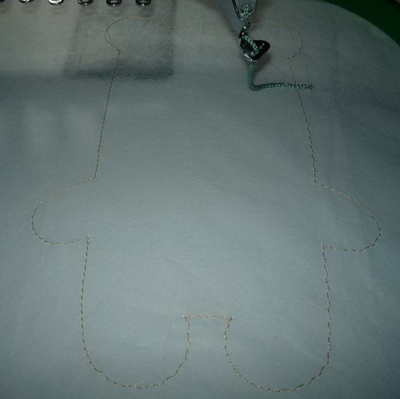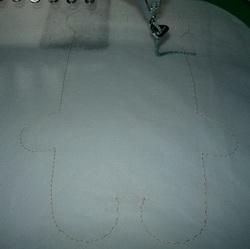Original text by: Marina Belova
A few days ago I was thumbing through a blog of Eileen Roche, a founder of the Design in Machine Embroidery magazine, and came across an interesting blog post about the difference between the placement marks in embroidery. Those who are curious may read the original blog:
I've already mentioned several times that I use such alignment/placements marks for linking he parts of big-size designs that don't fit into the hoop. But prior to reading this article it never occurred to me to distinguish between the notions, to understand what exactly I draw and why — indeed, this trifle is but a small part of my general knowledge of machine embroidery. If you ask me, when you give any notion an adequate definition, it will be much easier to understand what it's all about, and to explain it to the others.
So, using the timely assistance from this well-known lady, I want to define the placement marks in embroidery once and for all. All these marks I draw in editor and then embroider are needed for placing the fabric in the hoop in such a way that the embroidery would fit into the place you intended for it, and not at random. Of course, the positioning is rather rough. But essentially, there 2 kinds of placement marks (at least, that how many I can think of right now):
- The one that marks the future embroidery on a item or a fabric (called placement guide) — an ordinary running stitch that is used for positioning of the design on an item or positioning of the fabric/item onto the hooped stabilizer. This line may take various shapes, depending on the item that is being embroidered. I always use it in my In-the-Hoop projects.
Here is an example:

This kind of stitch will be invaluable if you need to accurately position details like cuffs, collars, napkin corners, neckbands or pockets etc. that are extremely tricky to hoop.
- The arrows or lines used for linking parts of the embroidery (called alignment or placement marks). I call them checklines. A mark of this kind is also an ordinary running stitch or even hand stitch. They often recommend to do it in the shape of a cross, a star or a letter Z, and to position it outside the embroidered area, with which I myself don't quite agree, because, in my opinion, marks like that do not help to align the parts of the design accurately.
In short, the process of linking of the parts of the design too large to fit into the hoop, looks like this:
I draw the marks of a great variety of shapes, depending on the object being embroidered, and always place them under the embroidery — it is easier to hide them this way, and I you almost never need to remove them afterward. For more information on how to align big-size machine embroidery designs in practice, read in our future articles.
There, one more concept in machine embroidery in now clear to me.



There are no reviews to display.